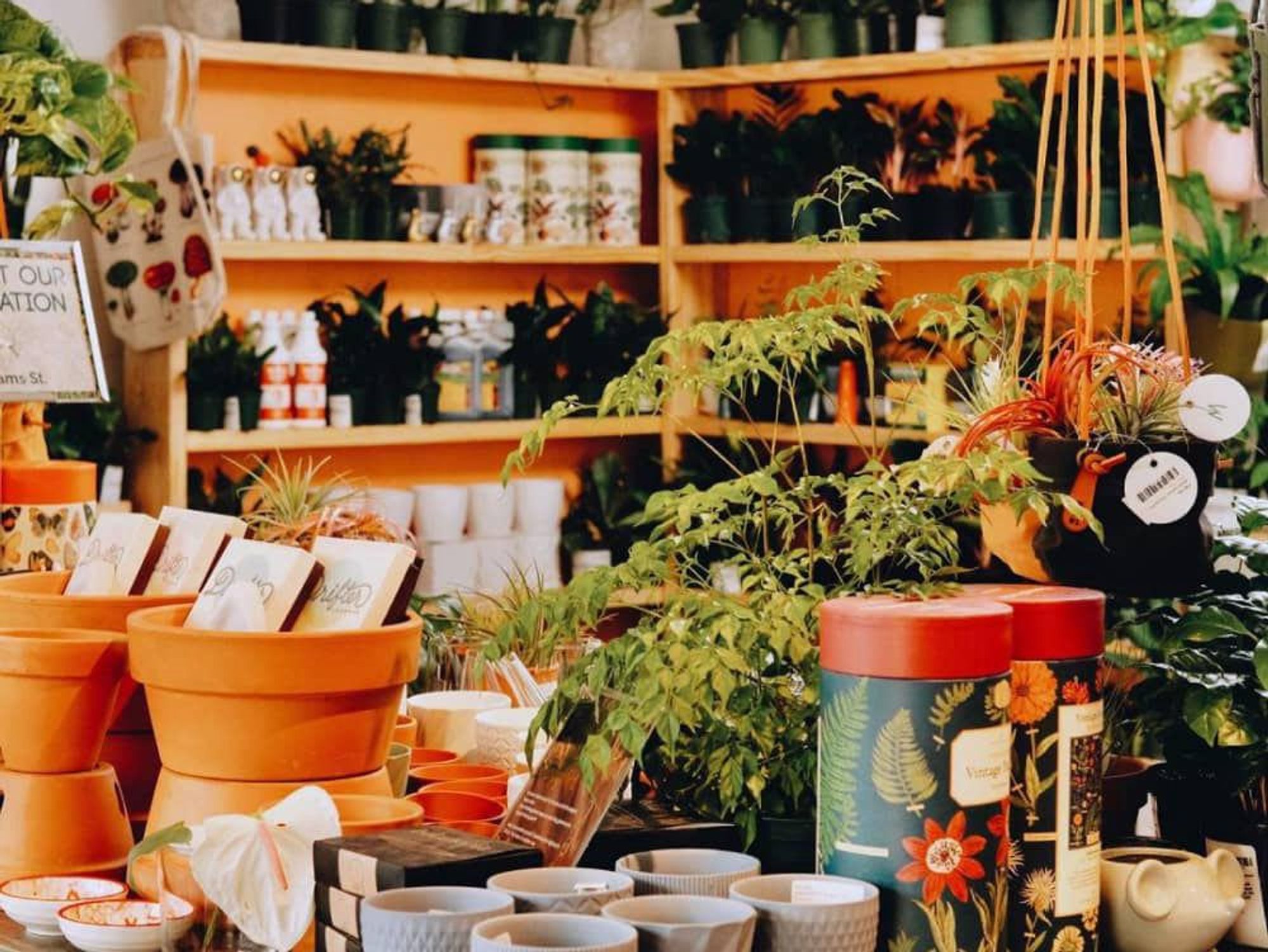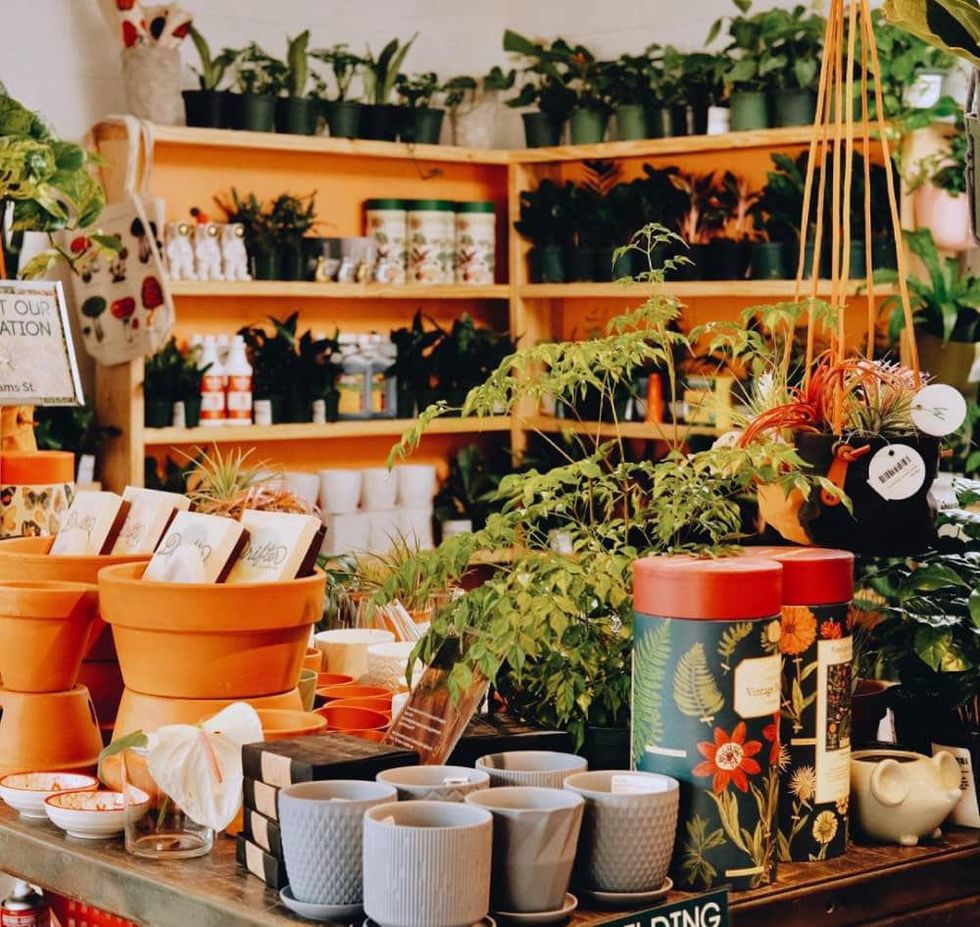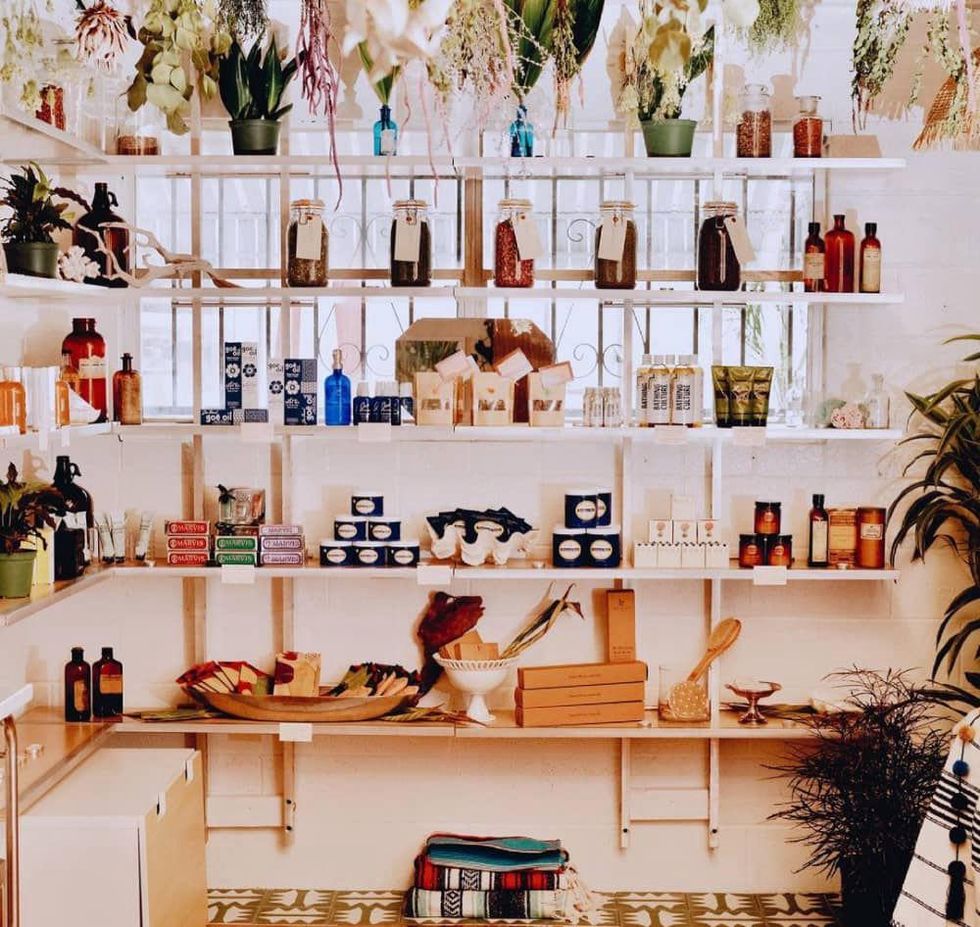Well, well, well
Eclectic new East Austin marketplace pops up with wellness in mind

The city of Austin and the concept of wellness grow parallel in the public consciousness and advertising schemes. Stepping outside our natural green spaces into grocery stores, gyms, and restaurants, it can be hard to separate sincere brand ethos from dubious promises. Thankfully, a hallmark of local Austin brands is a strong will to curate meaningful experiences in exchange for grassroots loyalty.
Mayawell, a local prebiotic soda brand, is running a four-month pop-up called Moment by Mayawell that gives local brands a chance to walk the walk in a true wellness marketplace.
Visitors, regardless of whether they plan to buy, can simply exist and enjoy the curated ambiance furnished by Clay Imports. The warm space can be used for catching up with friends or work. Plants by Garden Seventeen, Sabia apothecary offerings and pantry items line the walls, adorned with murals like so much of Austin. And a rotating gallery by ATX Gals features adoptable artworks.
At the center of it all, of course, are the drinks. The bubbly agave-derived Mayawell prebiotic is available to sample in novel forms, including infused matcha teas, ice cream floats, cocktails, and mocktails. A coffee trailer from Lady Elaine supplies hot drinks to picnic tables, where visitors might also sip natural wines from The Meteor and Easy Wine, and ciders from Fairweather Cider.
Finally, lunch dates are rounded out with food from Blenders & Bowls, Casa Verde, Gati Ice Cream, and Lucky Lime.
Ticketed pop-up events including yoga, group runs, and potting classes offer ways to get involved that are less consumption-based.
“The brand has always been based in both wellness and community,” says Mayawell spokesperson Michael Corrigan. “We wanted to create a space that we feel like really uniquely blended those two concepts, and also just brought together a lot of like-minded brands from across the city.”
A large part of Mayawell’s target audience for the pop-up, aside from people who already seek out the drink, is foot traffic in East Austin. As pedestrians peer in, they’ll see changing art and a variety of components for in-the-works events that aren’t yet announced or even decided upon. Some of them will walk away with the private joy of having discovered an unexpected bright spot in their own neighborhood.
One of the benefits of a temporary space, Corrigan says, is an opportunity for the brand to make those organic and flexible choices. Although the local brand is focusing all its energy on its hometown right now, it’s open to bringing the Moment by Mayawell pop-up to other locales with engaged customer bases, namely cities in Southern states and California.
“Wellness isn’t one-size-fits-all,” Corrigan points out. Like Austin, it’s “eclectic by nature.”
An Austin pop-up will look different from one in any other city, and from itself every day. And just like our minds need variety, so do our routines. Moment by Mayawell will offer routine disruptions at 2609 E. Cesar Chavez St. through September.



